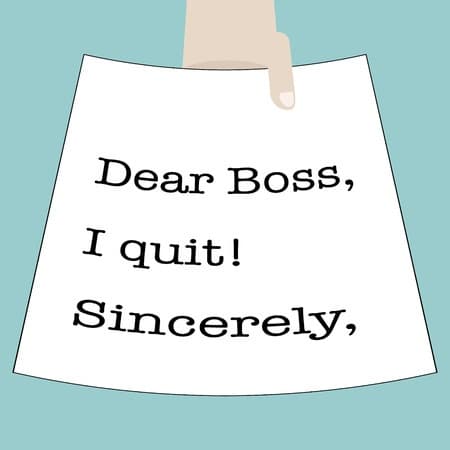I opened my email last week to see a message from a dear friend that said, “I resigned!!!! I pulled the trigger!!”
My friend and I have talked FOR YEARS about her unhappiness and lack of engagement, about the corporate politics and leadership egos that consume her days, about the constant pressure to do more with fewer people and resources, and about her exit strategy.
That’s right. She has had an exit strategy, and she has been refining and polishing it for years. Like the best strategic plans, it was deliberate, well-thought-out and executed over a multi-year time frame.
Employees are resolving to get a new job this year
For example, she has been socking away her Top Performer bonuses and vested RSUs to build a financial security net. She has been building and developing her professional network and now has many well-connected colleagues to support her with a job search. And she has been working with her partner to refine their lifestyle so it can be supported for a few years on only one income.
My friend’s departure will be a huge knowledge and skill loss for the company she is leaving.
She has regularly been ranked at the very top of their workforce and is very well-respected by senior leadership. They have invested in her for more than 20 years by giving her bigger and bigger roles and loads of visibility and responsibility, but they have not had a formal retention strategy to keep her engaged and satisfied at work.
If they had, they might not be facing the loss of her expertise and skills.
Getting a new job is one of the most popular New Year’s resolutions. How many of your employees are now answering headhunters’ calls, updating their LinkedIn profile and choosing to attend networking events over working late at the office? Do you have a retention strategy for these people? Are you actively working to re-recruit them to your organization?
If not, you are starting 2015 off already behind on your talent strategy.
At a minimum, you should be doing the following:
1. Conduct retention interviews with top performers
Remember the time and energy you spent in hiring for these roles? You should put just as much energy into meeting with key people at least annually to understand their job satisfaction and career aspirations and to listen to their ideas and input.
Standard “annual reviews” are not enough, especially if their agendas become consumed with corporate communications on performance ratings, merit increases, required training plans and standard objectives for the coming year.
Set up a separate conversation for top performers with a leader who has the authority to make things happen to increase someone’s engagement and satisfaction with their job and career, and make sure those conversations take place.
2. Understand what is causing employees to become disengaged
How is your employee opinion survey action plan coming?
If you take the time to survey your employees regularly on their satisfaction and engagement, you should also make action planning and revisiting those action plans a regular, ongoing part of your talent strategy.
If you haven’t looked at your action plan in a few months, pull it back out and check your progress. If you have completed everything on your plan, set up a focus group with employees to see if your actions are having the impacts you expected.
3. Revisit and update succession plans
Robust succession plans include development plans and critical experience needs for top candidates and key roles. You have to focus on both to have people ready for the challenge of a new role and to maintain stability during transitions.
Succession plans should also identify the leader accountable for ensuring the right people are getting the development and experience they need to keep your business thriving during times of change.
4. Stop expecting employees to work like it is 2011
The recession is slowly coming to an end in the United States and top performers are in demand in many industries and areas.
Your employees have more options in 2015 than they had before, and you need to convince them why staying with you is their best choice.
In 2015, make it your resolution to have a robust retention strategy for your top performers. If you do, they might not feel like they need an exit strategy.
This was originally published on PeopleResult’s Current blog.
